|
RENAISSANCE ITALY |
|
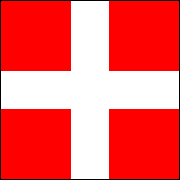
Duchy of Savoy |
|
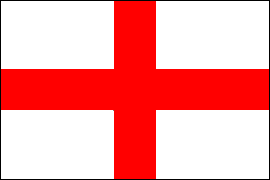
Republic of Genoa |
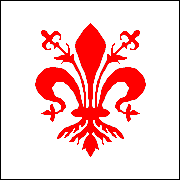
Republic of Florence |
|
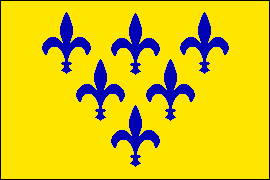
Duchy of
Parma-Piacenza |
|
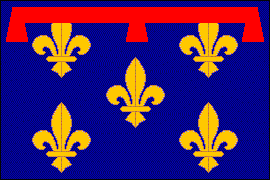
Kingdom of Naples
|
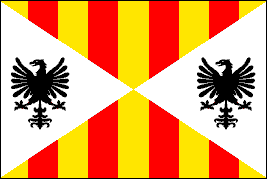
Kingdom of Sicily |
|
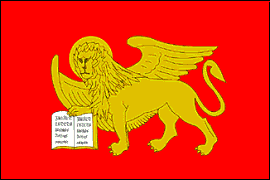
Venetian Republic
|
|
The states of medieval and
Renaissance Italy flew flags that were for the most part based their
coats of arms, such as that of the Duchy of Parma-Piacenza. The flag
of the Duchy of Savoy, whose ruling house was eventually to assume
the royal crown of a united Italy, a white cross on a red field, was
also a banner of arms. Later it acquired a blue border. The arms and
flag of Genoa displayed the Cross of St. George. Florence, destined
to become the capital city of the Grand Duchy of Tuscany, had a
banner with an ornate fleur-de-lise, red on a field of white. The
Kingdom of Naples, a bone of contention between France and Spain,
flew a flag similar to the Banner of France during the period of
Angevin rule between 1282 and 1442. The Kingdom of Sicily was part
of the Crown of Aragon; its flag combined the arms of Aragon (red
and gold stripes) and of the former ruling house, Hohenstaufen
(black eagles). Later these two kingdoms would be united as the
Kingdom of the Two Sicilies. The flag of the Republic of Venice
displayed a gold lion on a field of red. |
|
THE AGE OF REVOLUTION & NAPOLEONIC ITALY
|
|
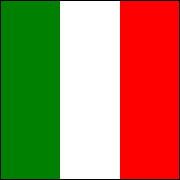
Cisalpine Republic •
1798-1802 |
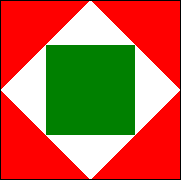
Italian Republic •
1802-05 |
|

Republic of Lucca •
1799-1801 |
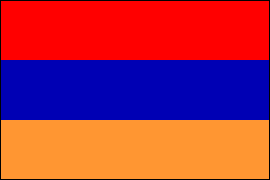
Republic of Piedmont •
1800-01 |
|

Roman Republic •
1798-1800 |
|
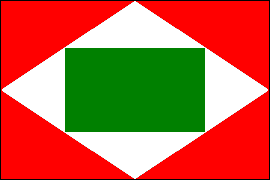
Kingdom of Italy •
1805-14 |
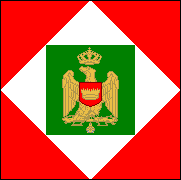
Royal Standard •
Kingdom of Italy • 1805-14 |
|
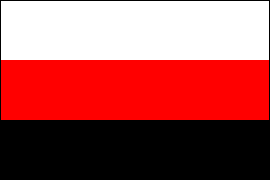
Kingdom of Naples •
1806-08 |
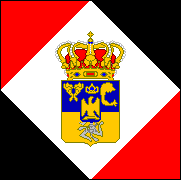
Kingdom of Naples •
1808-11 |
|
The French Revolution was a decisive
event in the history of modern Italy. The invading French armies
carried with them across the Alps the revolutionary concepts of
nationalism and republicanism, pointing toward a day when the
hodgepodge of Italian states might be united as a single country.
Soon the traditional Italian states found themselves transformed
into republics under French tutelage. Though these polities were
short-lived, they left their mark on the political face of the
peninsula. The advent of Napoleon, particularly after his assumption
of the imperial crown in 1804, led to a partial restoration of the
old order. The Italian Republic in northern Italy was transformed
into a Kingdom of Italy in personal union with the Empire of the
French. Elsewhere, the Papal States were returned for a time to the
Pope and the Kingdom of Naples carried on, albeit with the French
Emperor’s nominees on the throne. So far as flags were concerned,
one of the earliest of the French client states, the Cisalpine
Republic, adopted a green/white/red tricolor, obviously based on the
French Tricolor, that was destined to become Italy’s national flag.
Though the significance of the colors remains a matter of debate,
they soon became the recognized national colors of Italy. Many other
flags of the Revolutionary/Napoleonic period either used these same
colors or followed the form of the French Tricolor. |
THE MAJOR ITALIAN STATES IN THE NINETEENTH
CENTURY |
Kingdom of
Sardinia |
|
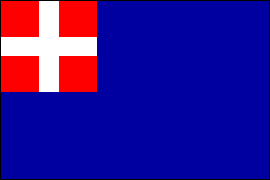
State Flag • Eighteenth
Century |
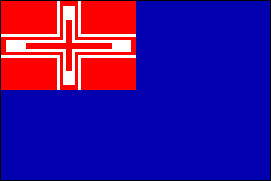
State Flag • Early
Nineteenth Century |
|
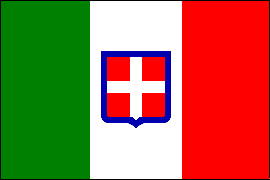 |
|
National Flag •
1848-61
The Kingdom of Sardinia, dubbed the
“Prussia of Italy” for its leading role in Italian unification, was
situated in northwest Italy. In fact, the homeland of its ruling
house was the Duchy of Savoy, a francophone territory. In the
eighteenth century the Kingdom’s state flag was blue with the Savoy
cross as a canton. Early in the nineteenth century the flag was
altered to display the combined crosses of Savoy (white cross on
red), Sardinia (red cross on white and Genoa (red cross on white).
Finally, in 1848, in a bid for the leadership of the nationalist
movement, the Sardinian flag was changed to the
Tricolore
with the Savoy arms on the white stripe. Twelve years later, this
would become the flag of united Italy. |
Kingdom of the Two
Sicilies |
|
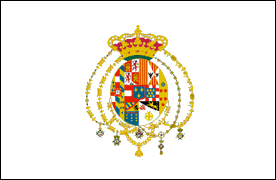
State Flag •
1816-48 & 1849-61 |
|
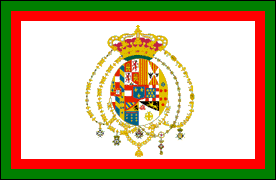
State Flag • 1848-49 |
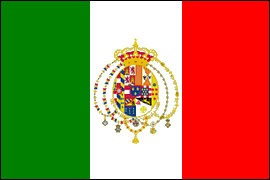
State Flag • 1860-61 |
|
The post-Napoleonic restoration of the Bourbon
dynasty transformed the Kingdom of Naples into the Kingdom of the
Two Sicilies. Also restored was the state and royal flag used in the
eighteenth century: white charged with the highly complex royal arms. Different versions of this flag
existed for use on land and at sea. During the revolutionary tumult
of 1948-49, the flag acquired a green/red border so as to display
the colors associated with Italian nationalism.
But nationalist hopes were soon dashed and the flag of 1816 was
reestablished. In 1860-61, as the kingdom trembled on the brink of
extinction, the Tricolore with the royal arms on the white
stripe made a brief appearance, but it was suppressed when the
territory of the Two Sicilies was annexed by Sardinia as part of the
new Kingdom of Italy. |
|
The
Papal States
|
|
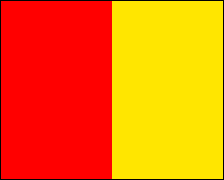
State Flag
• Eighteenth Century
|
|
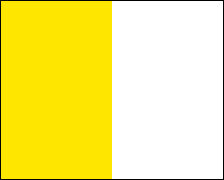
|
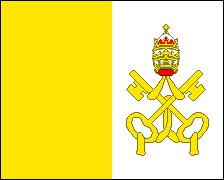
|
|
State Flags • Nineteenth Century |
|
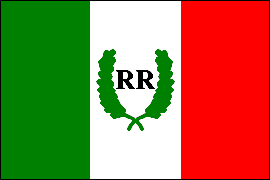
Roman Republic
• 1849-50 |
|
At the end of the eighteenth
century the Papal States included most of central Italy, extending
north into the Romagna, and including two small enclaves in southern
Italy (plus another small enclave around Avignon in southern
France). The Pope was thus one of the most important rulers in
Italy. The flag of the Papal States was scarlet and yellow up to
about 1808, yellow and white thereafter. A variant of the latter
flag displayed the crossed keys of St. Peter under the papal tiara,
similar to the current flag of the Vatican City State. In the
revolutionary years 1848-50, nationalist unrest led to the
establishment of a short-lived Roman Republic on the territory of
the Papal States. Its flag was the Tricolore with the
initials of the state within a wreath on the white stripe. Finally,
in 1859-61,
most of the Pope’s territory was annexed by Sardinia and became part
of the new Kingdom of Italy. Only Rome and its environs remained
under papal authority, supported by a French garrison. When this was
withdrawn in 1870, the Italian government seized Rome, extinguishing
the last vestiges of the Pope's temporal power. |
|
OTHER STATES IN
THE NINETEENTH CENTURY |
|

Duchy of
Parma-Piacenza • 1851-59 |
|
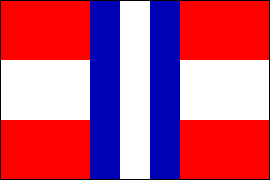
Duchy of Modena
• State Flag • 1830-59 |
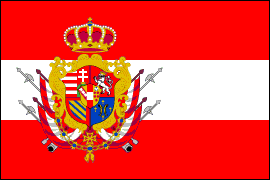
Grand Duchy of Tuscany •
State Flag • 1814-59 |
|
The final flag of the Duchy of
Parma-Piacenza
was based on the colors, though not the design, of the ducal coat of
arms. The Duchy of Modena and the Grand
Duchy of Tuscany were both ruled by branches of the House of
Habsburg, and the flags used by them in the nineteenth century were
based on the red-white-red colors of
Austria.
|
|
FROM KINGDOM TO REPUBLIC
|
|

Kingdom of Italy •
National Flag • 1861-1946 |
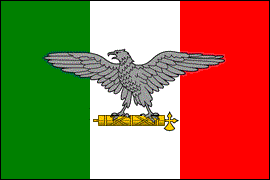
Italian Social Republic •
National Flag • 1943-45 |
|

Italian Republic •
National Flag Since 1946 |
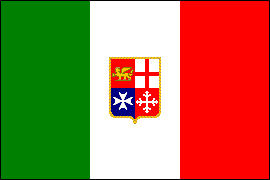
Italian Republic • Civil Ensign Since 1946 |
|
With the establishment of
the Kingdom of Italy in 1861, the 1848 flag of the Kingdom of
Sardinia, the Tricolore with the coat of arms of Savoy on the
white stripe, became the new state's national flag. As used by the
Army and the
Navy, the
flag displayed a royal crown above the arms. It was not changed when
Italy became a Fascist state in the 1920s, since the monarchy
remained in place. In 1943, however, following Mussolini's ejection
from power, imprisonment and rescue by the Germans, he was set up at
the head of a puppet state in the north of the country, called the
Italian Social Republic. Its flag was the Tricolore with a
silver-gray eagle poised on a gold fasces with its wings extending
into the green and red stripes. The puppet Social Republic collapsed
in 1945 and the Italian monarchy came to an end in the following
year. The Crown's legitimacy had been compromised by its
collaboration with the Fascist regime and in a 1946 constitutional
referendum the Italian people voted to transform their country into
a republic. The Savoy arms were accordingly removed from the
Tricolore. However, the new republic's
naval ensign
and civil ensign display the ancient arms of Venice, Genoa, Amalfi
and Pisa in commemoration of Italy's maritime heritage.
|































